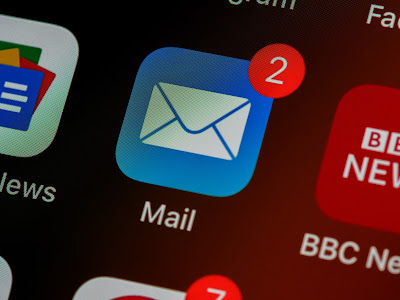Email marketing is an effective tool as it is direct contact with current or potential customers.
But in recent months, pushes for privacy and transparency have increased the difficulty of email marketing strategy. The most notable was Apple's Mail Privacy Protection tool. In short, when someone a user using Apple Mail as its email provider, they'll be sent an email, but it won't go to that user at first. Instead, it goes to a computer that eliminates identifying characteristics about the receiver. Then, the email is passed on to the intended recipient.
However, that user may not actually be opening the email, while you're analytics will say it was. Frustrating, right?
There have been several arguments for and against this practice. Won't get into that here.
What all that means is email marketers will have to be more creative in order to get engaged and stay engaged with its audience.
Let's dive deeper into email marketing.
To start, let's use Google or Gmail as an example. If you use Gmail you'll be familiar with this. Other email providers use this as well. There are tabs within a person's email inbox. They're primary, social and promotions.
Google/Gmail did this in 2013 as a way for users to sort their inboxes and minimize clutter (learn more here). Gmail tabs uses machine learning to determine where to put email based on a variety of signals. Signals include (but aren’t limited to) who the email comes from, what type of content is in the message and how users have interacted with similar content.
From there, the messages are sorted within a person's inbox:
- Primary: Emails from people you know (and messages that don’t appear in other tabs)
- Social: Messages from social networks and media-sharing sites
- Promotions: Deals, offers, newsletters and other “call to action” emails
- Updates: Notifications, confirmations, receipts, bills and statements
- Forums: Messages from online groups, discussion boards and mailing lists
While Gmail takes all of these signals into account, the most important one is one's engagement within their email inbox. Those actions or engagements teach Gmail's machine learning how best to sort your email. Here are four things you can do to teach Gmail to sort email from certain senders into specific tabs, so you stay in control of where your email goes.
This elevates the need to make sure you are creating engaging emails people want to open and, more importantly, engage with such as a click.
Several studies show people want more personal interaction on email, social media and etc.
How do you create engaging emails? One way to do that is be aware of trigger words/phrases that filter messages to tabs outside of the primary tab or, even worse, the spam folder.
According to Litmus, an email marketing specialist company, those phrases include:
- Enticing phases like “Click here!” or “Buy now!”
- This includes not just in subject lines, but also within the email itself, including call-to-action buttons.
- Multiple special characters in a subject line like “New feature! Come check it out!!!”
- All caps – it can give a high spam score and can seem aggressive.
- Image-only email as these can be marked as spam without real content to scan.
- Links that look like phishing attempts.
- Using link shorteners.
- These are great when posting to social media. But a tip in how to track your clicks is to set up a Urchin Tracking Module or UTM. Google offers a free tool to do just that, which also connects with your Google Analytics (https://ga-dev-tools.web.app/campaign-url-builder/)
Other tips to follow to make sure you're maximizing your potential email reach.
- You're following permission and spam laws.
- Make sure your audience segments are up to date.
- Target specific audiences within your contacts.
A statistic to keep in mind as a parting message (source: Litmus): On average, almost 20% of permission-based emails never reach consumers’ inboxes because they are filtered as spam or junk.

No comments:
Post a Comment